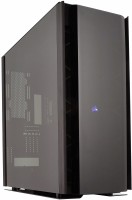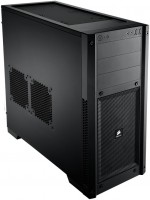Computer Cases Corsair series iCUE (gaming with RGB)
prices on 12 modelsCorsair iCUE
The Corsair brand was one of the first to successfully launch its iCUE RGB ecosystem, managing to cement itself in the minds of many gamers as one of the founding fathers. The beauty of the iCUE ecosystem is that it can be used to customize almost every LED connected to the system, creating entire color schemes with many complex special effects. And this is one of the rare cases when the backlight of the case in almost any mode looks expensive and rich. The disadvantage of the iCUE series is the high cost of Corsair products and the closed nature of the iCUE ecosystem.
 |
The average Corsair iCUE series case is a neat, monochromatic box with glass side panels and a transparent door, behind which hides several fans with RGB/ARGB lighting. As is customary with Corsair, these are roomy options with a significant displacement, capable of taking on board 7-8 case-based turntables, a high-performance drive, an ATX motherboard, any professional-level video card and a pack of various drives. They stand out due to the high quality of workmanship and the use of convenient mounting fasteners with the ability to hide unnecessary wires and cover all air intakes with dust filters.
The model range is designed in the usual way for Corsair, when all models are divided by size, and the overall performance level is indicated by the number 1000 or 3000. The higher the number, the theoretically cooler the case. Thus, at the beginning of the list are compact and narrow cases like the iCUE 2000D, the majority are models of medium-format Midi Tower cases iCUE 3000 and iCUE 4000, and the list is completed by the elite Full Tower chassis iCUE 7000 with an E-ATX tray, support for 480 mm LSS and 12 landing pads for fans. In most cases, the case comes with a solid front panel, which can be used as an alternative to a mesh one.



